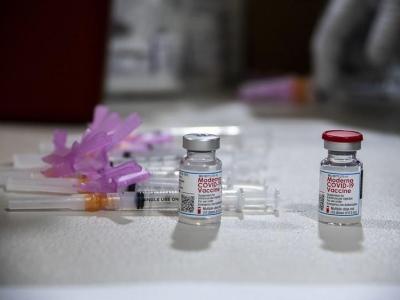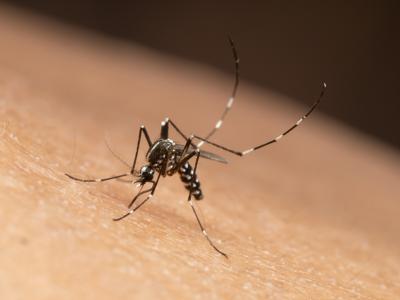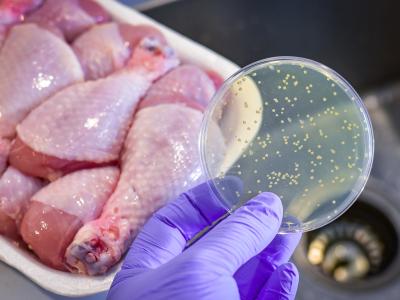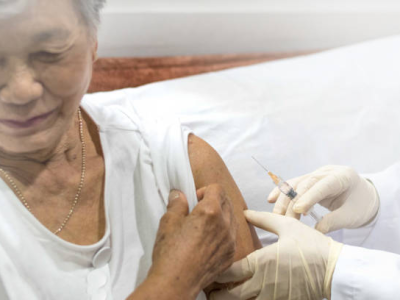Aug 20, 2010 (CIDRAP News) The recently reported factor that can make gram-negative bacteria resistant to nearly all antibiotics is a serious concern but does not necessarily top the list of resistance worries for healthcare in the United States, say two antimicrobial resistance experts who discussed the threat this week.
Neil Fishman, MD, president of the Society for Healthcare Epidemiology of America, said bacteria that produce the resistance enzyme NDM-1 are worrisome but asserted that another resistance enzyme, Klebsiella pneumoniae carbapenemase, or KPC, is a much bigger concern right now. KPC, like NDM-1, renders bacteria resistant to carbapenem and most other antibiotics, he said.
Brandi Limbago, PhD, of the Centers for Disease Control and Prevention (CDC) said NDM-1 bacteria bear close watching but should be controllable with careful use of antibiotics and proper infection prevention measures.
NDM-1, which stands for New Delhi metallo-beta-lactamase 1, was first reported last year but jumped into the headlines last week with the publication of a Lancet Infectious Diseases report on resistant bacteria in India and the United Kingdom. The researchers found 136 NDM-1-producing isolates in India and Pakistan and 37 in the United Kingdom. Many of the UK isolates were in people who had traveled to India for medical treatment.
The authors reported that the isolates, mostly Escherichia coli and Klebsiella pneumoniae, were highly resistant to all antibiotics except colistin and tigecycline, both of which pose considerable risks. They said NDM-1 has a high potential to become a global public health problem, since few antibiotics for gram-negative bacteria are in the pipeline.
The report sparked heavy news coverage with headlines about a new "superbug." And the implication that India is the source of the problem and that medical tourism is to blame for spreading it brought angry reactions from some in India. In the wake of all the coverage, it was noted that in June the CDC had reported three cases of NDM-1 bacterial infections in the United States, something that generated very little publicity.
Today the World Health Organization (WHO) referred to the Lancet report in a statement urging governments to increase their efforts to control multidrug-resistant pathogens.
Calling such pathogens "a growing and global public health problem," the WHO said, "Countries should be prepared to implement hospital infection control measures to limit the spread of multi-drug resistant strains and to reinforce national policy on prudent use of antibiotics, reducing the generation of antibiotic resistant bacteria."
The WHO recommended that governments step up surveillance for antimicrobial resistance and education on the appropriate use of antibiotics, stop the selling of antibiotics without a prescription, and promote strict adherence to infection control measures. The agency said these steps have proved effective in controlling resistant pathogens in many countries.
Fishman, who is director of the Department of Healthcare Epidemiology and Infection Control for the University of Pennsylvania Health System in Philadelphia, described his thoughts on NDM-1 as "a little bipolar."
"On one hand, this is a very concerning organism," he said. "It is concerning that it is spreading and being transmitted globally, it's a highly resistant organism with genetic elements that can be transferred to other organisms. On the other hand, KPCs are a much bigger problem in the US."
He explained that KPC bacteria were first identified in the Bronx and northern New Jersey about 5 years ago and have spread south and west. The enzyme was first found in K pneumoniae but has spread to other species in the Enterobacteriaceae family. That family includes such genera as Escherichia, Enterobacter, Salmonella, Serratia, Shigella, and Yersinia.
Both factors have the ability to make pathogens resistant to carbapenem and most other antibiotics, he explained. "Most organisms with KPC are still susceptible to polymixins, a very old antibiotic that at least in prior use had a very high nephrotoxicity," he added.
KPC producers are a particular problem in New York City hospitals, where they account for at least 30% of the K pneumoniae isolates, Fishman said.
"So my outlook is that we need to be aware of the NDM-1s and need to monitor for them and figure out how to prevent transmission, but from a management perspective the KPCs are a much greater concern at the moment," he said.
Limbago, who is lead scientist in the CDC's Antimicrobial Resistance and Characterization Laboratory in the Division of Healthcare Quality Promotion, agreed NDM-1 represents a serious concern, as it has the ability to spread into many different bacterial species and has been identified in several countries.
"Obviously it has spread from India to Europe and it appears to be spreading in the UK," she said. "They see it now in patients who haven't traveled abroad for medical care," indicating it has spread within the country. "So I think it's a concern."
But she added, "I think it can be controlled through judicious use of antibiotics and infection control."
She said carbapenem resistance has been a problem in the United States for about a decade, and NDM-1 is not the most common mechanism, only the newest. And while recent news coverage sparked considerable alarm, she added, the current risk in this country is limited to certain groups of patients.
"Patients with indwelling medical devices, catheters for instance, patients who are exposed to lots of healthcare, patients in ICUsthose are the kinds of patients who tend to be exposed to these kinds of things," Limbago said. Also at risk are "people who have traveled to India and been exposed to care there."
She said US physicians and infection preventionists should take NDM-1 very seriously. "When patients are identified as being colonized with these, they should be placed in contact isolation. People should follow careful hand hygiene in their interactions with them to try to limit that spread."
Fishman said the main goal regarding NDM-1 bacteria for now is detecting them. "When a carbapenem-resistant organism is isolated, I think we have to make certain we're looking for a history of medical tourism. . . . From a microbiologic standpoint it's important to keep in mind that there may be an alternative mechanism [of resistance], that it might not be just a KPC."
He and Limbago agreed that while NDM-1 makes infections much harder to treat, it doesn't by itself make pathogens more virulent or transmissible.
"Sometimes more resistant organisms are less virulent," Fishman said, citing vancomycin-resistant Staphylococcus aureus as an example.
See also:
Abstract of Aug 11 Lancet Infectious Diseases report
http://www.thelancet.com/journals/laninf/article/PIIS1473-3099%2810%2970143-2/fulltext
Jun 25 CDC report on NDM-1 detections in US
http://www.cdc.gov/mmwr/preview/mmwrhtml/mm5924a5.htm
Aug 20 WHO statement
http://www.who.int/mediacentre/news/releases/2010/amr_20100820/en/index.html























